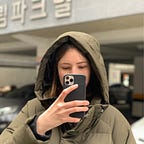05 | Macro UX: Get set
Design a way for people to experience The Hoffman Centre collections.
Group members 🤝: Kate Chernysheva, Qendresa Selimi, Tatiana Bohsali and Maria Shuttleworth
<<< For my previous post, 04 | Macro UX, click here.
This week we need to think about information hierarchy and start connecting metaphors and navigation within the experience.
We thought our problem could be that our plane metaphor represents an individual resource, rather than our desired library of resources. Referencing Object Oriented Ontology (Lindley et al., 2020), we thought about constellation mapping and how this might be a helpful way of interconnecting our topics to end in an organised library format.
I revisited information we had gathered throughout our project, both from our shared notes as well as the Hoffmann Centre’s website (Hoffmann Centre. 2021), which would serve as a base for further synthesis.
I thought about this information in two ways. The first was to categorise it alongside several other travel metaphors: boarding pass, passport, navigation screens etc. This was an idea we thought of earlier in the project but had not fully realised.
The second was to change our paper planes into origami birds, each with a different colour and shape. This would then act as an information organisation system informing the participant what category they are in.
Whilst discussing these ideas in a group meeting, Tatiana mentioned it would be useful to separate the categorisation system into levels:
To begin separating our information like this, we had considered doing card sorting (Martin and Hanington, 2012) with a focus group but due to time restraints we decided to simply do the organisation amongst ourselves.
Kate and I had a call where we organised all the topics I gathered into main and sub topics. The aim was to find a way to link it all together, rather than having it sit as a list. After the call I discovered something called a node-link diagram which Kate then used as a basis for our information sorting:
Tutorial.
John liked the direction our information architecture was going, although noted that it still needed enhancing. He advised us to work out a specific user journey to help us understand how a person would navigate with a specific query in mind.
Presentation Feedback.
As our project had shifted away from Speculative Design, we presented an updated aim to the class. Instead of encouraging exploration through the generation of chaos, we had come to a more orderly approach: wanting to encourage exploration through a personalised new method of organisation.
Our classmates commented that the experience looked disjointed, not having achieved a cohesive design. We need to specify the link between the website and the AR, and how you get from one to the other. Although they liked the idea of a navigable trail through the archive, but as of yet the idea is not communicated. Finally, many also regretted the loss of the paper planes from last week.
I agreed with these comments, and my group took it into consideration moving into next week, where we would focus on design integration and on linking up the website and AR better.
For the final post of this series, 06 | Macro UX, click here. >>>
References.
- Hoffmann Centre. 2021. Hoffmann Centre for Sustainable Resource Economy. [online] Available at: <https://hoffmanncentre.chathamhouse.org/> [Accessed 6 March 2021].
- Lindley, J., Akmal, H. and Coulton, P., 2020. Design Research and Object-Oriented Ontology. Open Philosophy, 3(1), pp.11–41.
- Martin, B. and Hanington, B., 2012. Universal Methods of Design. 100 Ways to Research Complex Problems, Develop Innovative Ideas, and Design Effective Solutions. 2nd ed. Beverly: Rockfort Publishers, pp.26–27.
